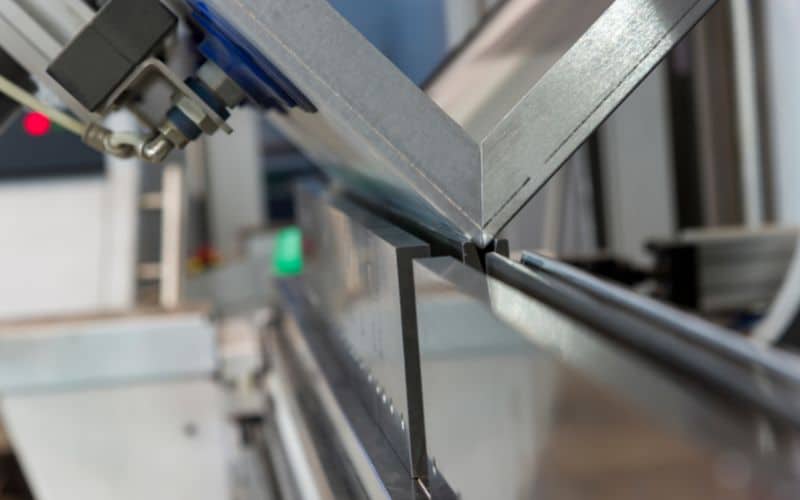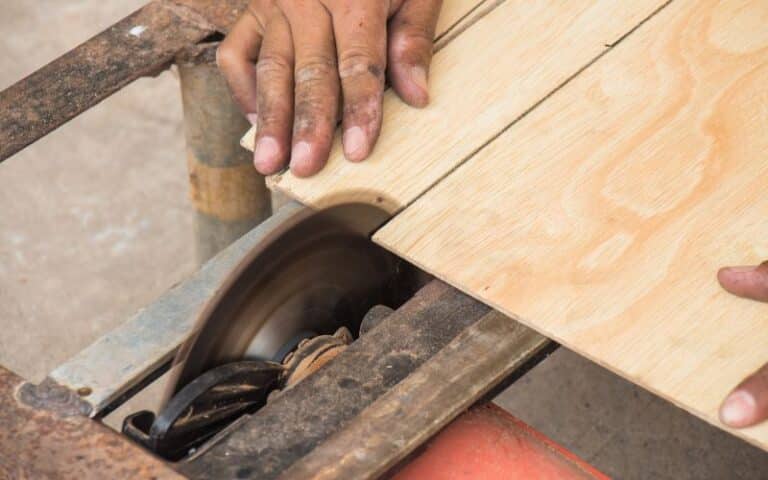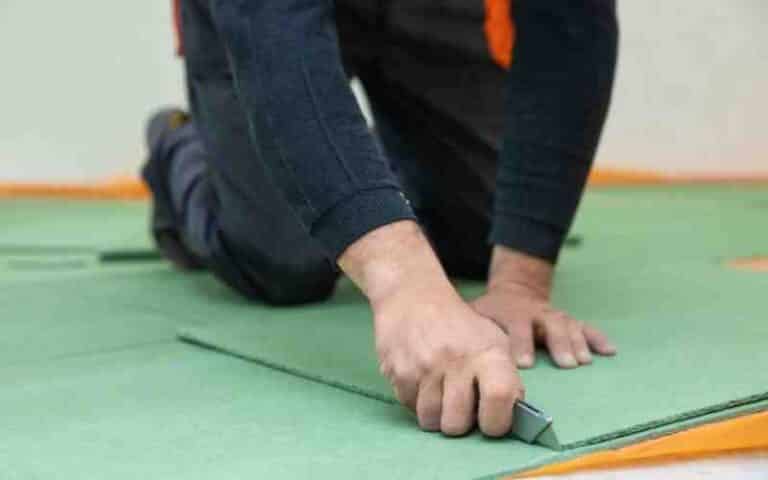Vinyl flashing involves using a general class of insulated, water-resistant materials on roofs, exterior walls, advertisement platforms, and floors.
It is an excellent insulation method that proffers protection against weather, environmental pollution, and water infiltration hitches. It guarantees durability with low maintenance.
Notwithstanding, for whatever process you are using the vinyl flashing, it is crucial to know how to bend the material to avoid wasting time, effort, and energy.
You can bend vinyl flashing using brakes. You can also bend it with your bare hands, which requires expertise to prevent damage. Nonetheless, using brakes is the most suitable approach for bending vinyl flashing. It only requires flipping up the metal handle along the edge, and the whole thing will get bent at once.
This article will show you how to bend vinyl without metal brakes, the step-by-step process of bending the material using brakes, and where you can use bent vinyl flashing.
Read on to learn more about vinyl flashing!
Ready for a Roofing Quiz?
Can You Bend Vinyl Flashing Without Metal Brakes?

Some people have a very wrong conception of vinyl flashing. Many believe that only metal brakes can bend vinyl flashing.
When they find it impossible to get their hands on metal brakes, they give up on attempting to bend the metal brakes they have gotten.
Meanwhile, you can also bend vinyl flashing without the use of metal brakes. You can bend it with your bare hands, and you can also bend it by hammering.
Whatever method you choose, you need to be careful about the angle of the bend. The angle should be a little greater than 90 degrees.
To acquire a perfect bend angle, you must be careful when making the bend to get no creases.
When you want to use your bare hands to make a right-angled bend, you can choose to use a pencil to draw a line.
Draw the line along the part of the vinyl flashing that you want to bend.
Hold one part of the vinyl flashing against one side of the right-angled surface that requires bending.
After that, use your other hand to press the second side against the corresponding side of the right-angled surface. You will get a satisfactorily perfect bend.
How Do You Bend Vinyl Flashing (Step by Step)?
Usually, you will need brakes which are expensive bending tools to kink sheet metal.
Nonetheless, you can finish the bending process without needing brakes. Your hands would do for small flashing materials.
Learning how to bend flashing materials without brakes is essential to efficiently complete some projects at home without relying on one.
Let’s dive into the steps required to bend vinyl flashing using a vise and a hammer. For this process, the following tools are important:
- Two wooden or metal form blocks
- A heavy-duty hammer or mallet (optional)
- Calculator
- Marker
- Protractor
- Rubber or rawhide mallet
- Ruler or tape measure
- Vinyl flashing
- Vise
- Hand gloves
For proper vinyl flashing bending, follow the steps listed below. (Be careful to adhere strictly to these steps)
- Organize your materials and ensure you have all the necessary tools available.
- Measure the thickness of the sheet using a ruler or tape measure.
- Use your protractor and marker to draw a clear line to bend your sheet.
- Cut the metal sheet to size (ensure to leave a minor trim)
- Smoothen and file the sheet to avoid rough edges and nicks that can create cracks.
- Pick your forms with a matching edge with the angle of your desired bend, and insert them in your vise.
- You should situate the forms with the form block guide angle pointing skyward.
- Clamp the metal sheet between the form blocks in the vise very firmly.
- Support excess sheet metal hanging outside your form blocks so it doesn’t impact your bend negatively.
- It would help if you asked a colleague to stabilize it with their hand for support. Do not forget to wear hand gloves to avoid cuts.
- Bend the metal by mildly tapping with a plastic, rawhide, or rubber mallet. Continue tapping until you obtain the desired angle.
- While tapping, start at one side of the evolving bend. Work back and forth slowly till you get an even angle.
How Difficult Is It to Bend Vinyl Flashing?
Handling vinyl flashing is very easy for users. Vinyl flashing is not a complex material to bend. Bending it is more straightforward than you may think.
Not only is the material easy to bend, but it is also easy to cut through. Also, there are minimal chances of you cutting yourself in the process.
The rolls are not the only ones that are easy to handle. Even the pre-cut sections feature the same quality. So you do not need to worry.
When you begin to practice bending and cutting vinyl flashing, you will realize that it is effortless to handle.
Vinyl flashing is easier to handle than aluminum or metal flashing.
Another reason why many people prefer it over metal and aluminum flashing because they are both susceptible to corrosion.
Vinyl flashing, on the other hand, is not prone to corrosion. The reason is that it is water-resistant and corrosion-resistant.
For this reason, vinyl flashing is more durable and has greater longevity than metal or aluminum flashing.
Also read: How To Measure Floor Deflection!
Where Can You Use Bent Vinyl Flashing?
Vinyl flashing is a thin material used by professional roofers.
It directs and leads water away from places where the roof plane comes into contact with vertical surfaces like walls.
The mentioned areas are critical, and flashing installations can help to protect them. Vinyl flashing surrounds roof structures like skylights, vents, and chimneys.
You can install vinyl flashing so water flows down the flashing side and into the shingles. With this, flowing water will not run into the roof deck.
Fortunately, the walls of houses can undergo flashing as well. Otherwise, water would slip into the spaces between the roof and the wall and enter your home.
One of the most common causes of a leaking roof is a bad roof flashing or one you didn’t install properly.
That is true for more susceptible areas like the chimney, dormer, or roof cricket.
Using vinyl flashing properly in these sites helps to prevent wood rot and eventual deck collapse. So you can see how vital vinyl flashing is.
There are specific locations where flashing is important in construction. Whatever roof construction you want to do will incorporate any of them.
The following are locations to use bent vinyl flashing:
- Valleys
- Skylights
- Chimneys
#1. Valleys
A valley is a place where two slopes of the roof meet. Flashing is essential in this location.
The slopes convey water into the valley, and the valley conveys the water down the section of the roof.
Therefore, even during light rainfall, a flowing water stream will gather in the valley. Valley flashings comprise long metal sheets equipped to fit into the valley.
#2. Dormers
A dormer is a joint in the roof. It is also a meeting point between slopes.
But dormers don’t form valleys. Step flashing installations seal the seams between the walls and roofs of dormers.
Like valleys, the seam between the dormer roof and the other roof parts stays protected with a long metal sheet.
#3. Chimneys
For chimney flashing, you can make the installations at the intersection sites on a building’s roof.
Chimney flashing is also called fireplace flashing. It comprises multiple flashing types.
Additionally, you can install step flashing on the sides perpendicular to the roof slope.
You can also install flashing to overlap the top of the step flashing. That way, it’ll direct water away from the joint with the roof.
Differences Between the Three Flashing Locations
| Valleys | Dormers | Chimneys |
|---|---|---|
| A place where the two slopes of the roof meet. | A meeting point between slopes that don’t form valleys. | Site of intersection with a building’s roof |
| It involves only one form of flashing. | It involves two forms of flashing. | It involves two or more flashing forms. |
Final Thoughts
Vinyl flashing is a durable flashing material used to protect the walls and roof of your house from running water. You should call a professional for roofing purposes.
However, for the more straightforward tasks, you can learn to handle the vinyl flashing, how to use it, bend, cut, and complete the projects yourself.






